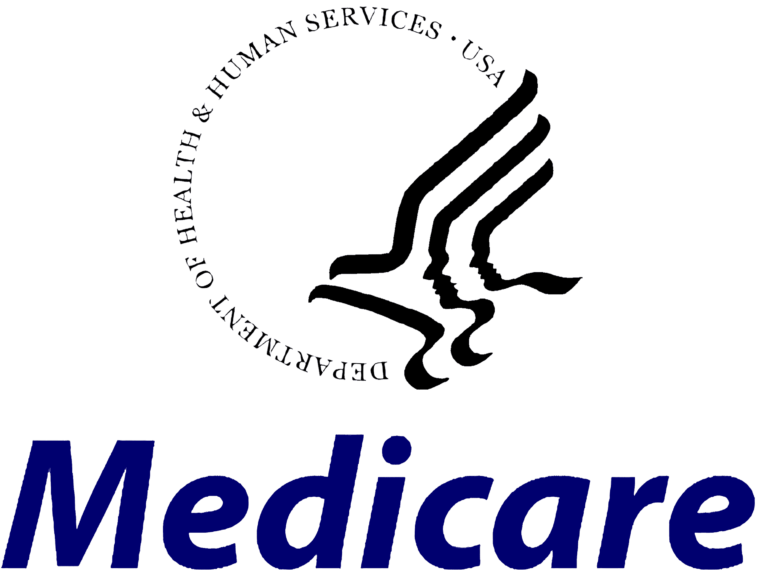We also treat many other types of pain. Pain associated with peripheral neuropathy, migraine and chronic headache pain, knee pain, and more. We are very proud of the success stories we are able to share with you. Don’t take our word for it; listen to the life-changing benefits patients are experiencing from our treatments!
You’re probably familiar with how spasms cause the affected muscles to suddenly and involuntarily contract. The exact characteristics of muscle spasms often vary from person to person or even from one episode to another. However, as the muscles tighten, you may feel twitching or individual contractions along with significant pain, and you may briefly lose control over the muscles.
While muscle spasms can affect any muscle, it is common to experience them throughout the neck, armpit, shoulder, down into the triceps, and even throughout the rib cage, pelvic floor, back of the thigh, or calves. Regardless of the muscle group affected, each serves essential functions, and if spasms begin to hinder them persistently, it can begin to make day-to-day life more difficult.
For example, muscle spasms throughout your arms or legs can cause pain and frustration and potentially impact normal mobility. Additionally, hand muscle spasms may reduce dexterity, while chest and abdominal cramping could have you concerned about any associated conditions.
Ultimately, muscle spasms are unpleasant and sometimes alarming, prompting people to seek answers about the potential underlying causes. Let’s move on to discuss some of the more common causes of muscle spasms.
Common Causes Of Muscle Spasms
A muscle spasm episode can happen at any time; perhaps you’ve felt your muscles contracting while exercising, driving, or shopping. For some people, spasms might even interfere with their sleep. Exploring some of these common causes of muscle spasms can help you better understand your symptoms and identify potential triggers.
Dehydration
We all know how vital it is to be well hydrated, but let’s be honest—we all probably could use a little extra water throughout our busy schedules. Dehydration contributes significantly to developing muscle spasms because it disturbs the balance of vital electrolytes necessary for regular muscle contraction and function.
As a result, dehydration can cause your muscles to spasm, twitch, or cramp unexpectedly. This is why it is important to grab the water bottle and rehydrate throughout the day.
Overuse Or Muscle Fatigue
Overexerting your muscles without allowing for proper rest and recovery or repeatedly engaging in strenuous movements can result in muscle fatigue. This then leads to the buildup of metabolic waste products like lactic acid, which can irritate nerve endings and trigger spasms or cramps.
Electrolyte Imbalances
Similar to dehydration, an imbalance in electrolytes can arise from not replenishing vital nutrients with a balanced diet. Whether it’s after strenuous physical activities or a big day of work, neglecting nutritious foods can lead to low levels of electrolytes, especially magnesium, potassium, calcium, and sodium, increasing the likelihood of muscle spasms.
Poor Blood Circulation
Another common trigger for muscle spasms is poor blood circulation. Without appropriate blood flow, muscles may become deprived of oxygen and nutrients, causing them to become dysfunctional and perhaps contract involuntarily. Tight clothing, prolonged sitting, strenuous exercise, or specific medical conditions can all interfere with normal blood circulation.
Nerve Compression
If there is intense pain, tingling, or numbness associated with your muscle spasms, it is possible you may have nerve compression. A compressed nerve has the potential to trigger abrupt involuntary contractions of the surrounding muscles. A medical evaluation could be necessary to determine the underlying cause of nerve compression and rule out any structural concerns.
Now that we are clear on some of the main causes, let’s look at what can happen when persistent muscle spasms are left untreated.
Consequences For Untreated Muscle Spasms
Ongoing muscle spasms are not something that should be ignored. If this frustrating condition is left untreated, it could lead to a number of adverse consequences, including the following:
Persistent Pain And Discomfort
Whether the muscles affected are large or small, it can be very painful when they suddenly contract or spasm. People frequently describe tight, throbbing, or sharp pinching pains that can range in intensity from minor discomfort to distressing pain.
Moreover, pain can be more than just physical discomfort. Chronic pain, such as daily muscle spasms, could significantly affect your mental health and perceived quality of life, especially because spasms can be unpredictable and strike at inconvenient times.
Impaired Mobility And Function
It is common to temporarily lose control over your muscle’s normal movements during a spasm. This can be alarming, as the tightness of the cramp takes over, and you can no longer voluntarily move the affected areas. Regular, everyday tasks may become affected if the problem persists – even something as basic as walking throughout your house or preparing food.
Muscle Weakness And Imbalance
If spasms are left untreated, there is a potential for muscles to weaken and form imbalances. Repeated spasms over a prolonged period can prevent proper muscle relaxation and recovery, gradually diminishing normal muscle strength and tone. This weakness doesn’t only affect the spasming muscles but may also disrupt the balance among surrounding muscles, tendons, and joints.
Increased Risk Of Injury
As a consequence of weaknesses and imbalances, aspects such as your posture and movement patterns can be altered, increasing the risk of injury. For instance, leg muscle spasms can cause weaknesses, leading to walking difficulties and reduced balance, which could result in unexpected falls or accidents.
When muscular spasms are addressed promptly, these problems can be better managed or avoided, allowing for optimal muscle strength and balance while reducing chronic pain and discomfort.
Since each person’s experience with muscle spasms can be different, it’s important to talk about your concerns with a doctor, get a precise diagnosis, and develop a customized treatment strategy. Next, let’s look at how muscle spasms are assessed and diagnosed.
Assessment And Diagnosis Of Muscle Spasms
Seeking medical attention is the first step toward finding an accurate diagnosis and effective treatment. When you visit a doctor for your muscle spasms, there are several diagnostic methods they may use to help determine the underlying cause. Here is what you can expect from that initial appointment:
- Medical history: Your healthcare provider may begin by asking about your current symptoms, their frequency, how long muscle spasms have been a problem for you, and any factors that may trigger or worsen them.
- Physical examination: A physical examination of the affected area helps your doctor assess for any physical limitations in mobility, associated muscle tension, signs of inflammation, or other abnormalities that may contribute to persistent spasms.
- Blood test: A simple blood test can check for any electrolyte disturbances or dehydration.
- Imaging tests: Specific imaging tests such as X-rays or MRI scans provide detailed images that may help identify injuries or structural concerns.
- Electromyography (EMG): By measuring the electrical activity of the affected muscles, an EMG test assists in identifying any potential nerve damage or dysfunction.
These tests are part of a comprehensive assessment that can help you and your doctor get to the bottom of persistent muscle spasms. We will discuss some of the commonly prescribed treatment options in the following section.
Conventional Muscle Spasm Treatments
When it comes to treating and managing muscle spasms, the focus is on alleviating pain, improving mobility, and addressing any potential underlying causes.
Treatment approaches will vary depending on individual symptoms and the intensity of your spasms. Some of the conventional treatment options your doctor may recommend include:
Massage And Stretching Exercises
Massage therapy can help release muscle tension, improve circulation, and promote relaxation, all of which may minimize the irritation that triggers muscle spasms. Additionally, massage can be a great way to soothe pain as your body’s natural painkilling endorphins are released, helping you relax.
Alongside massage, a doctor may recommend a number of stretching and strengthening exercises. The frequency of muscle spasms could be reduced when the affected muscle’s mobility, flexibility, and strength are improved through appropriate stretches and exercises.
Heat Or Cold Therapy
Another great way to promote muscle relaxation and relieve built-up muscle tension associated with spasms is with a warm compress or heat pack. On the other hand, a cold pack may provide relief by reducing inflammation and relieving pain with a gentle numbing effect. It’s a good idea to test both therapies to determine which one works best for you.
Medication
Your doctor may suggest painkillers such as paracetamol or ibuprofen to temporarily ease the discomfort and reduce inflammation brought on by muscle spasms. In severe cases, they may prescribe muscle relaxants or recommend a pain-reducing cream be applied to the affected area. It is important to have a doctor or pharmacist guide you through taking any new medications.
While these conventional therapies may provide some relief, you may find that it is merely temporary or that you continue to have significant discomfort. In such cases, it’s helpful to explore alternative treatment options that could provide you with much-needed longer-lasting relief.
The Neuragenex NFPM Approach To Managing Muscle Spasms
Neuragenex Neurofunctional Pain Management specializes in providing individualized protocols that effectively address the distressing and painful symptoms of muscle spasms. Our specialized techniques focus on selectively stimulating the nervous system to mitigate inappropriate pain signals, intending to provide long-lasting relief as well as enhance your overall well-being.
Our comprehensive approach to treating the pain associated with muscle spasms combines the following whole-person approach without the need for drugs, chiropractic adjustments, or invasive procedures.
Electroanalgesia
Electroanalgesia is a cutting-edge therapy that utilizes high-frequency electronic waves to reach deep down into your muscles. Also known as nerve stimulation therapy, this non-invasive treatment is a powerful Neurofunctional Pain Management technique that works by stimulating the nerves and targeting the underlying causes of pain at a cellular level.
By promoting nerve regeneration and reducing pain signals, electroanalgesia aims to enhance muscle function, reduce inflammation, and alleviate the impact of muscle spasms. It also triggers the release of naturally occurring endorphins and neuropeptides, helping patients receive a great sense of well-being and rejuvenation.
We have seen patients experience amazing results after receiving electroanalgesia treatments, eventually finding relief from the challenges posed by muscle spasms and regaining their mobility, allowing for a better quality of life.
Specialized IV Therapy
Intravenous (IV) therapy is another essential component of the protocol that can be particularly beneficial for addressing the pain and discomfort associated with muscle spasms and the frequency at which they occur.
IV therapy re-introduces essential vitamins, minerals, electrolytes, and amino acids directly through the bloodstream. This targeted nourishment strives to reduce inflammation and enhance the body’s healing processes to support healthy muscle function.
We carefully analyze each patient’s bloodwork to tailor IV therapy programs, addressing individual deficiencies, hydration levels, and electrolyte imbalances to support their natural healing processes.
Lifestyle Counseling
We recognize the uniqueness of every individual’s pain journey. This is why our dedicated team of professionals is committed to providing comprehensive care for individuals and is proud to offer personalized lifestyle counseling.
Our comprehensive range of guidance, resources, and techniques related to diet, exercise, and stress management is carefully tailored to address the unique needs of each individual and empower them to manage their painful symptoms and optimize their own well-being proactively.
Through customized lifestyle modifications, patients can effectively support their muscle health, promote optimal nerve function, and reduce the impact of muscle spasms. This whole-person approach recognizes that sometimes muscle spasms are not isolated issues but can affect multiple aspects of a person’s life.
Our innovative Neuragenex Neurofunctional Pain Management approach aims to provide long-lasting relief and enhance overall well-being. Take the first step towards a pain-free life by exploring our individualized protocols and reclaiming control over your health. Contact us today to embark on your journey to lasting relief and improved quality of life.



















